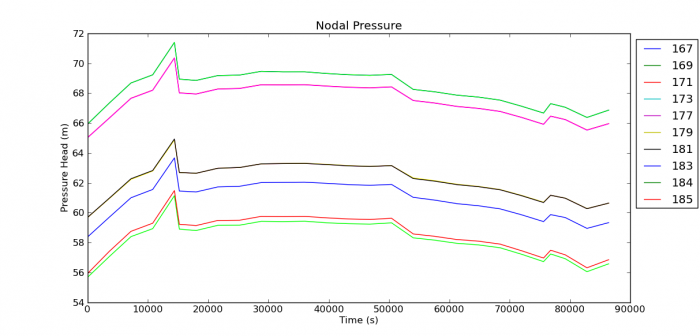Difference between revisions of "EPANET-Python"
| Line 26: | Line 26: | ||
==Testing== | ==Testing== | ||
* go to | * go to ./src and run the epanet2_test.py | ||
==See Also== | ==See Also== | ||
* EPANET-Emitter [[EPANET]] | * EPANET-Emitter [[EPANET]] | ||
[[category:Computing]][[category:Unix]][[Category:Hydrology-Meteorology]] | [[category:Computing]][[category:Unix]][[Category:Hydrology-Meteorology]] | ||
Revision as of 19:33, 17 April 2012
When I started teaching programming for water professionals at UNESCO-IHE, I was compelled to use C/C++ as the language. This is due to the fact that EPANET2.0 and EPA-SWMM5.0 (Two main programes, students in my department had to learn) were written in C language. However, C/C++ is a horrible first language. Students have to cover at least three days of learning of arcane syntax and rules before they begin to write some semi-useful code. On the other hand, if I could conduct the classes in Python, they will see the `light' within a few hours! They can start doing interesting and useful things from the very beginning of the study. What a way to stimulate learning!
I wanted to make it possible to call EPANET2 and EPA-SWMM5.0 procedures from python. Following is the first attempt:
Download
- Test program with graphics using Matplotlib swig_python_epanet_toolkit.zip
How to use
Linux
- Make sure python2.7 python2.7-dev, numpy and matplotlib are installed
- Extract swig_python_epanet_toolkit_pyplot.zip and go to epanetools directory and run the following command.
python setup.py build install
OS-X
Should work similar to Linux, but I don't have a Mac to test on :-)
Windows
- Install a python stack with numpy and matplotlib.
- use the copy _epanet2.pyd and epanet2.py files to <pythong direcotory>\Lib\site-packages directory.
- Then use epanet2_test.py program in src directory to test.
Testing
- go to ./src and run the epanet2_test.py
See Also
- EPANET-Emitter EPANET
